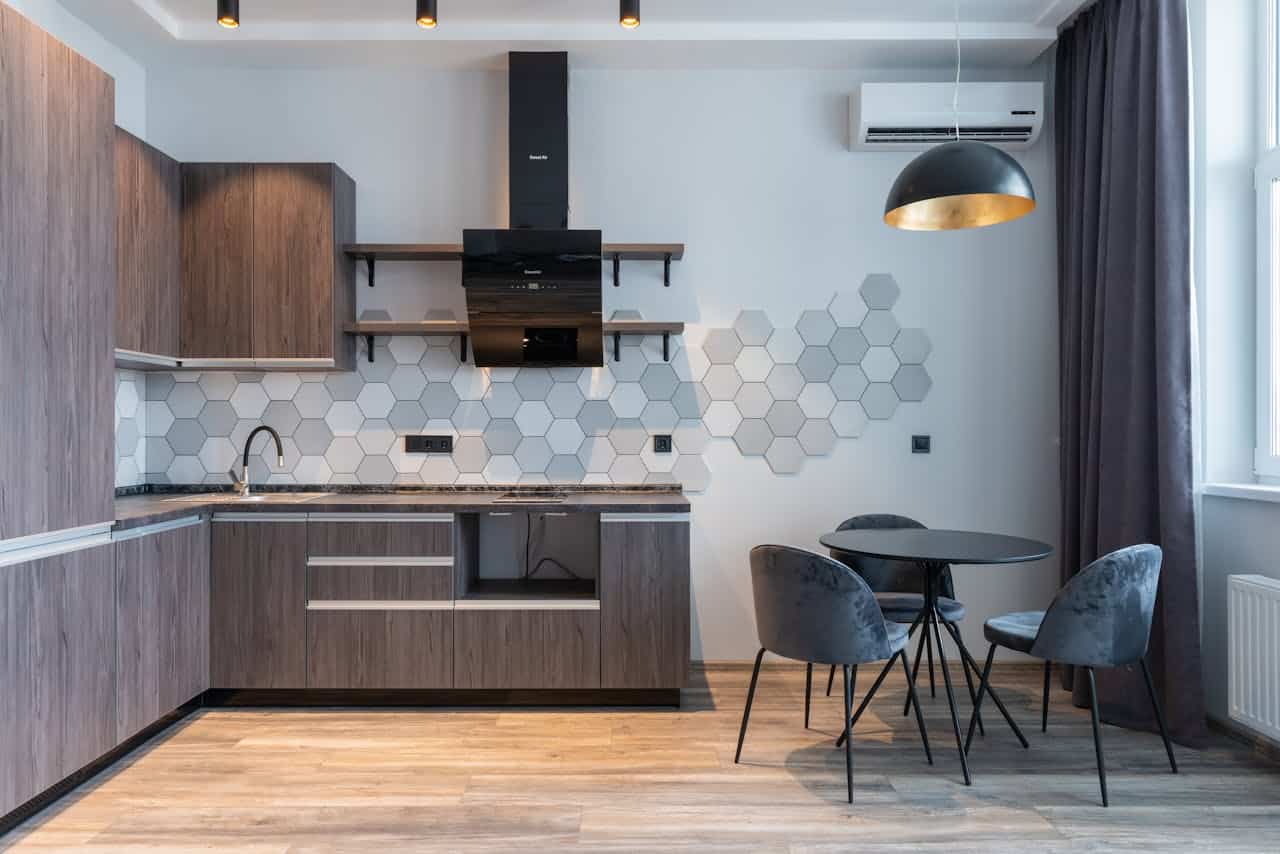As a homeowner, you have plenty on your plate from complying with specified standards or rules that may include anything from lawn maintenance to keeping the house clean and orderly. However, do you know which of many spaces in your house gets no attention you render to it?
The air that is in our homes can quickly be polluted by allergens and various other contaminants, which makes it hard to breathe properly for people who live in our homes.
Fortunately, you can take action in many ways to make the air around you cleaner and guarantee that your family is safe.
In this blog post today we are going to talk about how that good, healthy indoor air can be provided - so keep on reading to learn how!
Click the following link to get in contact with a heating and air conditioning company that can help you improve the air quality inside your home.
How to Improve Indoor Air Quality
In every square inch, ensuring your indoor air quality is #1, is the most crucial thing that must be done. Further, good physical health has a strong connection with mental health. On the other hand, sometimes it may be quite difficult to let fresh air in because the weather is bad. Hence, these are some of the options that can be done easily that will help you boost your indoor air quality.
1) Open Your Windows and Let in Some Fresh Air
With pollen and other harmful particulates filling up the air outdoors, it can be difficult to open the windows and let in the fresh air.

hand open white plastic pvc window at home
Image Source: airassurance.com
But it's certainly worth doing: the best way to improve inner air quality is to have some ventilation running in the background. The stagnant air composed of bacteria, viruses, pollen grains, pollutants, and all impurities affects the quality of air inside a space. Whereas applying a few household techniques: alternating between the settings of the HVAC fan and purchase of a HEPA filter, could be as well cost effective in reducing the pollution as much as possible.
Open up all the windows in your unit, and you will immediately notice an improvement in the quality of life within without many hours of air ventilation.
2) Get Some Indoor Plants to Help Improve Air Quality and Add Some Life to Your Home
Don't just settle for a mundane living space - get some indoor plants!
House plants can be quite powerful in this regard, as they can instantly brighten up any space, and at the same time they can purify the air inside your home by producing oxygen and at the same time filtering different pollutants from the atmosphere. It couldn’t be a more appropriate time to experiment with gardening; there’s a multitude of tools online, including watering schedules and wide selections of plants for any weather variations.

Image Source: allure.com
Moreover, just gardening a couple of indoor plants will keep you busy during the whole week and that will make you happy! And if you’re up for transforming your indoor environment without having to invest too much effort or money, then think of this: making it more green. Indoor plants that you can think about might include snow queen pothos, Spider Plant from American Plant Exchange, golden pothos, and bird’s nest fern from American Plant Exchange.
3) Vacuum and Dust Regularly to Get Rid of Allergens
Having your house clutter-free is a crucial aspect of your health because it contributes to the perfect air base. It is very necessary to vacuum and use a duster frequently, especially if there are pets or young children in the home.

Image Source: housebeautiful.com
Vacuuming a room ensures that dirt particles that negatively affect air quality are disposed and common allergy triggers like pet dander and dust mites are also minimized in that room. Not to mention using the right vacuum bag as you go can ensure you get even more dust and dirt with every pass, which makes it easier than ever to breathe cleaner air not just in your house, but elsewhere as well.
Moreover, research has highlighted that during regular vacuuming, the negative effects of asthma could be eliminated from family members - indicating how great vacuuming assistance could be for the health of your family.
4) Use a Dehumidifier to Reduce Moisture Levels in the Air
If the mood indoors becomes very humid and stuffy, the moisture in the air is sure for the blame. The solution? So, We recommend the use of a dehumidifier with pump action. Besides, it is a very easy to operate gadget which, at the same time, works great. It operates by drawing in the moist indoor air and draining all the excess water vapor from that environment.

Image Source: healthline.com
Hence, you will have air that feels less humid and that everyone inside will be more comfortable and happy. Furthermore, it is relatively safe to sleep with a dehumidifier operating during the night as it operates for 12 hours with no need of rebooting or restarting the device.
Furthermore, high moisture reduction levels will also be useful in preventing any mold development. Moreover, this purchase is one of the best investment options for you, if you want fresh air at an affordable cost.
5) Avoid Using Harsh Chemicals or Aerosols That Can Pollute the Air
Living in an atmosphere full with chemicals for a long time and inhaling these aerosols will due harm to our health and the environment, therefore it is necessary to be aware of the goods we allow to come into our homes and workplaces.

Image Source: thenewyorktimes.com
Thus apart from many natural alternatives being air-friendly and budget-friendly, materials such as baking soda, lemon juice, vinegar, and essential oils which are cleaners themselves can be used in most cleaning tasks you can envisage.
Not only do you get these greener alternatives that take care of your cleaning job without insulting the air quality but you are also assured of people not exposing themselves intentionally or their family to the harsh chemicals with possible adverse side effects.
Eco-friendly alternatives in your day to day cleaning gives you a peace of mind in knowing that you won't be polluting your local community by breathing in toxic gases - or rather releasing pollutants to the environment at large.
6) Install an Air Purifier to Remove Harmful Particles from the Air
If the air quality in your home leaves something to be desired, installing the best medical-grade air purifier can help reduce the number of contaminants and pollutants in the air, making it healthier for you and your family. Furthermore, if you have poor ventilation that can't be improved by windows, then an air purifier is an excellent way to improve airflow.

Image Source: cnet.com
Many air purifiers contribute to an energy-efficient home and are economical to run and provide as many as five levels of filtration in a single unit. Whether you’re dealing with a dander dilemma, allergies, reducing stubborn odors, or looking for more particulate protection after indoor fires or renovations, an air purifier like Honeywell AirGenius 5 can help.
7) Keep Your Rugs and Carpets Clean
Good air quality doesn't just come from leaving a window open. Your area rugs also matter. Rugs and carpets trap dust, hair, fibers, pet dander, and moisture, and that's why it is important to keep them as clean and dry as possible. You can do this by addressing spills immediately since the longer they sit, the more the dampness sets in, and the harder they are to get out.

Image Source: bigredcarpetcleaners.com
Additionally, you should note that vacuuming your rugs gets rid of indoor air pollutants that you might not see with the naked eye. Vacuuming at least once a week goes a long way to improving indoor air quality in your house. Additionally, if you react to dust, you might have dust mites in your carpets. Luckily, they can be removed with a thorough steam cleaning.
Furthermore, you should also get your area rugs and carpets professionally cleaned at least once a year to improve the overall air quality in your house.
8) Use Cooking Vents
Cooking is common in many households, and not all houses have air conditioning systems. Therefore, cooking vents are an important feature to have in your kitchen. Remember that every time you stand over your stove, carbon monoxide, nitrogen dioxide, and grease is released into your space, causing indoor air pollution.

Image Source: hgtv.com
Cooking fumes from gas stoves promote poor indoor air quality, and not to mention any smoke released will stick to the fabric on curtains and rugs. Usually, air fresheners might resolve the smell but not improve the air indoors. Therefore, cooking vents and modern hood ranges on gas stoves whisk away any odors and pollutants in your space and improve airflow and quality.
9) Change Your AC Filter
AC filters generally need to be changed every 30-45 days, depending on your allergies. If you don't change your AC filter, outdoor air pollutants will enter your house. Dust, pollen, hair, and pet dander can clog the installed air conditioning in your living room and restrict airflow. Not to mention, you will receive higher utility bills.

Image Source: airmaster.com
Outdoor air pollution, like harmful chemicals and other airborne particles, will make its way into your house and can pose a health risk. Clogged AC filters in indoor spaces will cycle back volatile organic compounds into your house, then keep short cycling. The whole process is messy and not recommended.
10) Buy a Good Air Filter
Buying a portable air cleaner can be cost-effective in the long run, clean indoor air, and improve your health. Have you ever woken up with blocked sinuses and allergies? Those are tell-tale signs of poor indoor air quality. Therefore, an air filter is more dependable than a blocked AC filter.

Air filters do a great job of removing smaller particles and other health hazards from your space. They are also very handy for source control. Therefore, if you have a pet, any dander is immediately removed. Additionally, if you sometimes use natural ventilation, it is best to adjust the ventilation settings on your air filter to high immediately after, so the air filter can do its job.
Furthermore, a good alternative to normal air filters is Corsi-Rosenthal boxes. They are made like box fans, with a few filters glued together. They still work well to keep your space free of indoor air pollutants and come minus the hefty energy costs of a stalling air purifier. Not to mention you can construct one yourself.
Frequently Asked Questions on Tips to Improve Indoor Air Quality
i) What are the 5 main factors that affect indoor air quality?
There are a few common factors that affect indoor air quality regardless of where you live. They are:
- Pet dander, urine, and feces
- Humidity
- Dust
- Chemicals
- Ventilation
ii) Can I purify the air in my house naturally?
Yes, you can. Apart from having house plants, you can also use beeswax candles, activated charcoal, and essential oils. Remember that not all house plants can purify the air in your space. Therefore, ensure to get one that does. Beeswax candles are good for preventing you from inhaling pathogens. They are also good for asthmatics.
iii) What is the best solution for poor indoor air quality?
Ventilation is one of the best solutions for poor indoor air quality. The next best thing would be air conditioning systems and portable air cleaners. Additionally, keeping your house clean could reduce the number of pollutants indoors.
iv) What symptoms allude to indoor air pollution?
The most common symptoms that homeowners get are sinus congestion, headaches, eye irritation, dry throat, sneezing, and nausea. Sometimes people with allergies might get a mild to severe allergic reaction due to an irritant in their environment.
v) Does a fan improve air quality?
Yes, fans improve air quality. By circulating the air in a room, fans reduce mildew and mold growth. Keep in mind that when you install a fan, ensure it is ducted toward the exterior of the house. Placing duct outlets into places like an attic will not solve the problem, but will recycle the pathogens back into the house.
vi) How can a dirty AC filter affect indoor air quality?
A clogged air filter will continue to spread dangerous pathogens throughout your house. It can also diminish your system's airflow and make it work harder. Additionally, a dirty AC filter will spread extra dust into your house and will not do a good job protecting your HVAC system.
vii) What are the most common sources of indoor air pollution?
The most common sources of indoor air pollution emanate from everyday actions. Cooking on an open flame is one of the most common sources. Others include cleaning agents, dust, dander, and radon.
viii) Do plants help indoor air quality?
Yes, they do. Some species of plants like Chrysanthemum, money plant, Aloe Vera, and Gerbera Daisy filter out pollutants like carbon monoxide. However, remember that you will need many plants for it to work.
ix) Why is indoor air pollution worse than outdoor air pollution?
Indoor air is more densely concentrated compared to outdoor air. Additionally, outdoor air quality is 10 times better than its counterpart. Breathing in a house with densely packed contaminated air means you inhale more pollutants each time. Plus, the concentration of pollutants builds up from sources inside your home if they aren't released outdoors.
x) Why is indoor air quality important?
Indoor air quality is important because short and long-term exposure can pose health risks. It is easy to contract recurring respiratory issues, cognitive problems, and more serious issues like heart disease and different types of cancers. Additionally, we tend to spend more time indoors and inhale more indoor air. This would put anyone at a higher risk of contracting diseases.
Conclusion
Bringing up quality of air in your home doesn't need to be a burdensome or expensive task. This blog post gives a few hints which when followed will be to everyone’s advantage as you and your family will breathe the healthier air even daily.
In the case where you need more tips on getting the air inside your home healthy, call a licensed HVAC professional for further details.














